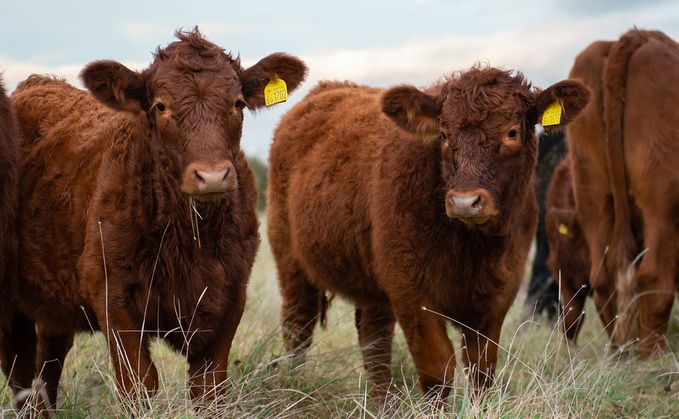
A pioneering trial has demonstrated that net zero beef production is already a reality due to regenerative farming practices and robust scientific monitoring.
The four-year project was undertaken at Oxfordshire’s FAI Farms, sponsored by McDonald’s and involving soil carbon specialist Agricarbon.
It found that a shift from rotational to adaptive multi-paddock (AMP) grazing enabled the 486ha organic farm to achieve a net carbon balance of -49.7 tonnes of CO2 equivalent.
The result stems from a combination of low emissions and significant carbon sequestration in permanent pasture.
The modelling was underpinned by comprehensive soil analysis, led by Dr Harry Kamilaris of Agricarbon, which confirmed that regeneratively managed beef cattle can sequester more carbon than they emit.
“We’ve known for some time that healthy soil can sequester high amounts of carbon, and it’s fantastic that these figures can form part of the growing global evidence to back this up,” said Dr Kamilaris.
“Our data supports companies like McDonald’s with their commitments for sustainable sourcing from carbon-rich and healthy soils.
"It allows them to reduce emissions in their supply chain by supporting farmers to introduce advanced grazing practices.
"And we can use FAI Farms’ approach to help farmers adopt these practices across the country.”
Soil sampling, conducted by Agricarbon in May 2022 across three key fields, revealed a total carbon stock of 3,977 tonnes—an average of 107 tonnes per hectare.
According to Karl Williams of FAI Farms, these findings, when combined with gross emissions figures, confirm the farm is operating beyond net zero.
The transition to AMP grazing involved moving cattle frequently between tall, rested pastures, allowing extended recovery periods for vegetation.
This change increased grass yields and allowed livestock to be kept outdoors throughout winter, reducing the need for supplementary feed and bedding.
“We only bought in a small amount of feed for the 90 dairy store animals; the 80 suckler cows and followers were sustained purely from grazing and forage produced on the farm,” said Mr Williams.
“We do not use synthetic fertilisers, and have low bedding requirements due to outwintering the suckler herd.”
Over the course of the project, laboratory analysis revealed significant increases in soil organic matter and active carbon.
At a depth of 0–10cm, soil organic matter rose from 7.6% to 9.2%, while at 30–50cm depth, it increased from 2.7% to 4.4%.
Active carbon levels surged by 5% and 81% respectively across the same depths—highlighting the importance of measuring soil health beyond the top layer.
“As soil organic carbon builds relatively slowly, our plan is to collect further data in spring 2027 to support the transition with transparent and robust datasets,” added Dr Kamilaris.
“This initial paper and baseline underpin the science; the data we generate from remeasurement will then underpin the integrity of carbon removals reported.
“This is an important step for the whole supply chain, enabling farmers and processors to reduce the overall carbon footprint of beef production and help them to meet net-zero aspirations.”
